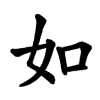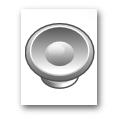Definify.com
Definition 2025
丑
丑
| ||||||
|---|---|---|---|---|---|---|
Translingual
| Stroke order | |||
|---|---|---|---|

| |||
Han character
丑 (radical 1 一+3, 4 strokes, cangjie input 弓土 (NG), four-corner 17105)
References
- KangXi: page 77, character 4
- Dai Kanwa Jiten: character 23
- Dae Jaweon: page 154, character 4
- Hanyu Da Zidian: volume 1, page 12, character 7
- Unihan data for U+4E11
Chinese
Glyph origin
| Historical forms of the character 丑
| ||||||||||||||||||||||||||||||||||||||
|---|---|---|---|---|---|---|---|---|---|---|---|---|---|---|---|---|---|---|---|---|---|---|---|---|---|---|---|---|---|---|---|---|---|---|---|---|---|---|
| Oracle bone script | Bronze inscriptions | Large seal script | Small seal script | |||||||||||||||||||||||||||||||||||
 |
 |
 |
 |
|||||||||||||||||||||||||||||||||||
| ||||||||||||||||||||||||||||||||||||||
|
References:
Mostly from Richard Sears' Chinese Etymology site (authorisation),
| ||||||||||||||||||||||||||||||||||||||
| Characters in the same phonetic series (丑) (Zhengzhang, 2003) | |
|---|---|
| Old Chinese | |
| 峱 | *nuː |
| 紐 | *nuʔ |
| 扭 | *nuʔ, *tnuʔ |
| 狃 | *nuʔ, *nus |
| 鈕 | *nuʔ |
| 忸 | *nuʔ, *nuɡ |
| 杻 | *nuʔ, *n̥ʰuʔ |
| 莥 | *nuʔ |
| 羞 | *snu |
| 丑 | *n̥ʰuʔ |
| 沑 | *njuʔ, *nuɡ |
| 粈 | *njuʔ |
| 衄 | *nuɡ, *njuɡ |
Etymology 1
|
simp. and trad. |
丑 | |
|---|---|---|
Pronunciation
- Mandarin
- (Standard Chinese, Beijing)+
- Pinyin:
- Zhuyin: ㄔㄡˇ
- Wade-Giles: ch'ou3
- Gwoyeu Romatzyh: choou
- IPA (key): /ʈ͡ʂʰoʊ̯²¹⁴/
-

- (Standard Chinese, Beijing)+
- Cantonese
- (Standard Cantonese, Guangzhou)+
- Jyutping: cau2
- Yale: cháu
- Cantonese Pinyin: tsau2
- IPA (key): /t͡sʰɐu̯³⁵/
- (Standard Cantonese, Guangzhou)+
- Hakka
- (Sixian, incl. Miaoli and Meinong)
- Pha̍k-fa-sṳ: chhú
- Hakka Romanization System: cu`
- Hagfa Pinyim: cu3
- IPA: /t͡sʰu³¹/
- (Sixian, incl. Miaoli and Meinong)
- Min Nan
- (Hokkien)
- Pe̍h-ōe-jī: thiú
- Tâi-lô: thiú
- Phofsit Daibuun: tiuo
- IPA (Xiamen): /tʰiu⁵³/
- IPA (Quanzhou): /tʰiu⁵⁵⁴/
- IPA (Zhangzhou): /tʰiu⁵³/
- IPA (Taipei): /tʰiu⁵³/
- IPA (Kaohsiung): /tʰiu⁴¹/
- (Hokkien)
| Rime | |
|---|---|
| Character | 丑 |
| Reading # | 1/1 |
| Initial (聲) | 徹 (10) |
| Final (韻) | 尤 (136) |
| Tone (調) | Rising (X) |
| Openness (開合) | Open |
| Division (等) | III |
| Fanqie | 敕久切 |
| Reconstructions | |
| Zhengzhang Shangfang |
/ʈʰɨuX/ |
| Pan Wuyun |
/ʈʰiuX/ |
| Shao Rongfen |
/ȶʰiəuX/ |
| Edwin Pulleyblank |
/ʈʰuwX/ |
| Li Rong |
/ȶʰiuX/ |
| Wang Li |
/ȶʰĭəuX/ |
| Bernard Karlgren |
/ȶʰi̯ə̯uX/ |
| Expected Mandarin Reflex |
chǒu |
| Baxter-Sagart system 1.1 (2014) | |
|---|---|
| Character | 丑 |
| Reading # | 1/1 |
| Modern Beijing (Pinyin) |
chǒu |
| Middle Chinese |
‹ trhjuwX › |
| Old Chinese |
/*[n̥]ruʔ/ |
| English | 2d earthly branch |
Notes for Old Chinese notations in the Baxter-Sagart system: * Parentheses "()" indicate uncertain presence; | |
| Zhengzhang system (2003) | |
|---|---|
| Character | 丑 |
| Reading # | 1/1 |
| No. | 1526 |
| Phonetic component |
丑 |
| Rime group |
幽 |
| Rime subdivision |
1 |
| Corresponding MC rime |
丑 |
| Old Chinese |
/*n̥ʰuʔ/ |
Definitions
丑
- second of twelve earthly branches (十二支): ox (牛) of Chinese zodiac
- clown; comedian
Compounds
|
Etymology 2
| For pronunciation and definitions of 丑 – see 醜 (“ugly”). (This character, 丑, is the simplified form of 醜.) |
Notes:
|
Korean
Hanja
丑 • (chuk, chu)
Eumhun:
- This term needs a translation to English. Please help out and add a translation, then remove the text
{{rfdef}}.
References
Vietnamese
Han character
- This term needs a translation to English. Please help out and add a translation, then remove the text
{{rfdef}}.


































